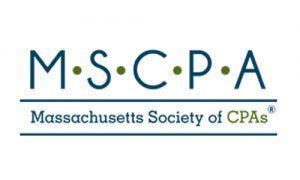Save yourself some stress. Start your year-end tax review now
An important part of my service to you is to help identify actions you can take before year-end to minimize your personal 2016 federal income tax bill. Accelerating or delaying income and deductions, contributing to retirement plans, and taking investment losses are just a few of the strategies you might want to consider. Here’s a checklist to help you get started.
- Max out your 401(k) before year-end. For 2016, you can set aside $18,000 if you’re under age 50. If you’re 50 or older, you can contribute $24,000.
- Get your investment planning in order. Year-end sell decisions, either to rebalance your portfolio at the lowest tax cost or to offset gains and losses, are only one aspect of investment planning. Another is keeping good records for the reinvested dividends of stocks you sell in 2016. Reinvested dividends add to your cost basis and reduce taxable gain or increase the deductible loss on the sale. Finally, consider the wash sale rule. This rule disallows a current-year loss when you purchase substantially identical securities within a 61-day period. If you plan to sell stocks to secure a loss, and intend to buy the stock back, don’t wait until the last moment.
- Make gifts before year-end. The use-it-or-lose-it tax-free gifting allowance is $14,000 per donee for 2016. Remember, gifts to individuals are not tax-deductible.
- Contribute to your Health Savings Account. Within limits, contributions are tax-deductible and can be used tax-free to pay unreimbursed medical expenses.
- Keep an eye on the “kiddie tax.” This tax on your dependent child’s unearned income in excess of certain limits applies when your child is under age 19 (under age 24 if a full-time student).
We have more planning strategies to save you tax dollars. Contact us for a year-end review.
Insurance enrollment begins this month
Beginning this month, you can sign up for a new 2017 health insurance policy on the health insurance Marketplace. You can also change or renew the policy you purchased during the last enrollment period. Even if your current policy has an automatic renewal feature, you’ll want to verify that you’re getting the best deal, and that you are still eligible for the federal premium tax credit.
What if you didn’t sign up last winter and didn’t have health insurance coverage in 2016? You may owe a penalty on your 2016 federal income tax return. The penalty is calculated in one of two ways: as a percentage of your income, or on a per-person basis. You pay whichever is higher.
For 2016, the penalty is 2.5% of your annual household income, up to a maximum of the national average premium for a Bronze plan. The per-person penalty is $695 per adult and $347.50 per child under 18 (up to a maximum per-family penalty of $2,085).
Can your business survive these seven potential disasters?
Disasters, natural or otherwise, could ultimately lead to your company’s demise. Fortunately, advance planning can keep you on track. Here are seven scenarios to be prepared for.
- A natural disaster. To paraphrase the old saying, you can talk about the weather, but there’s not much you can do about it – except have a plan in place in the event a natural disaster damages your business premises. Two tips: Maintain adequate insurance and store valuable business data at a secure off-location site.
- A key employee quits. Cross-training can avoid business interruptions if a key employee leaves unexpectedly. You might also want to consider asking key employees to sign a reasonable non-compete agreement to protect confidential information. Typically, these agreements prohibit an employee from working for a competitor for a certain period.
- An employee embezzles company funds. To safeguard your business assets, divide responsibilities so one person doesn’t have complete control over the books. Set up a system of checks and balances.
- Your biggest customer leaves. To keep your business from going under, update your marketing plan, stay in touch with former customers, establish an emergency budget, and diversify your revenue stream.
- You become disabled. “Key-person” disability insurance can provide funding to keep your business afloat. The policy may also cover employees who are vital to operations.
- Your company or partnership splits up. Draft a buy-sell agreement to ensure a smooth transition due to the sale of a business interest, including a forced sale on the death of one of your shareholders or partners. The agreement can establish the terms of a buy-out and set a value for the respective business interests.
- Your computer system crashes. Extra hardware, such as tablets or laptops, regular off-site backups, and cloud storage for important documents can avoid a crisis when your computer fails.
Stay ahead of the deadline for 2016 required minimum distributions
If you’re over 70½ and are required to take distributions from your IRA or other retirement account, remember that you must take your 2016 required minimum distribution by December 31. Due to year-end holidays and transfer time constraints, getting the process started now can avoid a last-minute rush, as well as a steep penalty of 50% of the amount not taken.
If this year’s distribution is your first, you have a one-time option of waiting until the beginning of April 2017 to start taking withdrawals. Just remember, waiting means you’ll have two taxable distributions next year.
Contact us for details.
Time to renew Individual Taxpayer Identification Numbers
Individual Taxpayer Identification Numbers (ITINs) are nine-digit numbers issued by the IRS so certain taxpayers who do not have a social security number can file a tax return. According to the IRS, approximately 11 million people have received an ITIN. Now, some of these numbers may need to be renewed. ITINs that have not been used on a federal income tax return for three consecutive years will expire on December 31 of the third consecutive year. Under current rules, ITINs not used on a tax return during 2013, 2014, or 2015, will expire on December 31, 2016. In addition, ITINs issued before 2008 will expire on December 31, 2016, even if they have been used on a tax return.






